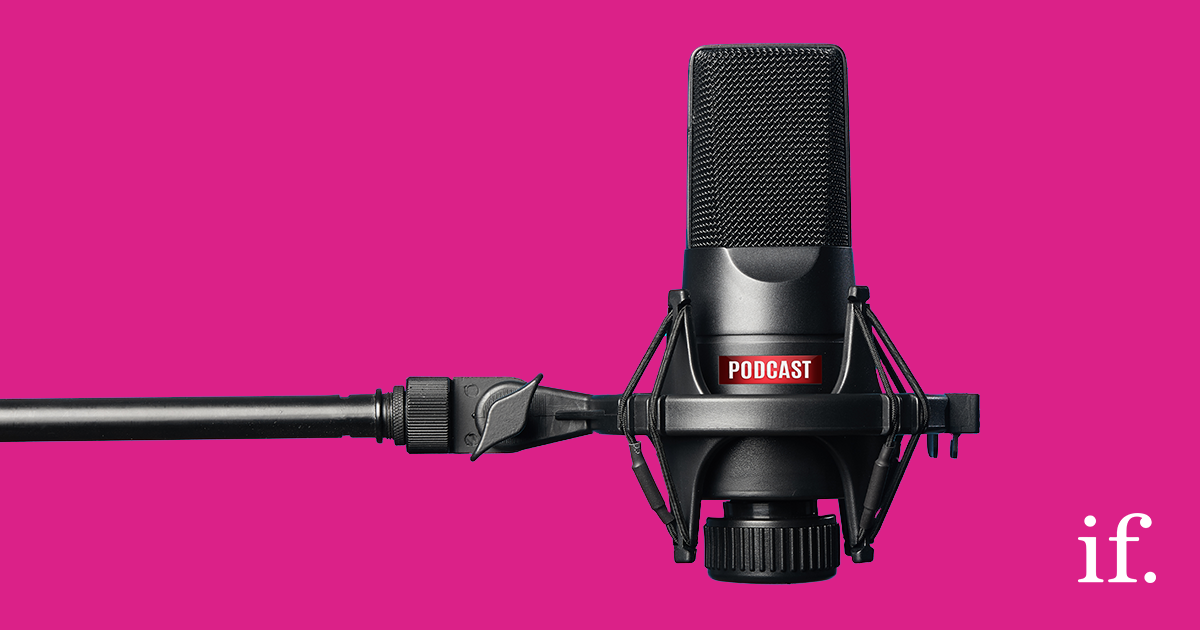Ep 49: Serious Social – Read the feed
It seems you cannot go a day without companies making missteps on social. From inappropriate covid responses to BLM virtue signalling – this last year has been a playbook on how to miss fire with your messaging, alienate customers and garner awareness for all the wrong reasons. No one wants to purposefully upset customers. So how can you stop being tone-deaf?
If you’re after more know-how to break the social boring, subscribe now.
Full Transcript
Welcome to the Serious Social podcast, created by the straight-talking social media experts at immediate future.
Welcome to serious social
We’ve all done it. Put out foot in our mouths, made a faux pas, said the wrong thing. Even just talking about it, I break into a sweat remembering those moments where I spoke before I had really thought about what I was saying.
In the most part, I make a fool out of myself amongst friends, colleagues and family. They forgive me. They know I don’t mean it.
It is not the same for companies. They are not so easily forgiven, A stupid move, and the brand applecart can tip over. Sure, it might not always mean the death of the company (unless you are Ratners – or old enough to remember Ratners), but the brand damage in the moment can be significant. If it doesn’t completely implode your brand, it certainly alienates your audience. Enough to warrant a swathe of senior apologies, possibly a few heads on the block or at the very least more spend and new campaigns to mitigate the mess.
Whilst I am sure the Burger King, international women’s day debacle is still top of everyone’s mind, it got me thinking about why and how brands can get it so wrong. How can they not read the room? Or on social how is it, they don’t feel the mood of the feed.
The more I thought about it, the more I realised that this last year, there have been more than a few missteps. In fact, a month doesn’t go by without some brand, or high-profile business leader hitting the headlines.
Remember Dettol and their weird underground advert that looked like a government information advert. It was meant to relate to all of us returning to work. It totally misjudged the mood of Londoners who were reluctant to go back into offices in September. One Twitter user responded: “Thank you, Dettol, for convincing me to work from home forever.”
Remember when Sports Direct said they intended to stay open despite the Government ordering all non-essential shops to close. It was so crass. They even initially, defended the decision by saying they provided an essential service. And then did a U-turn following a backlash on social media.
We’ve had blackout Tuesday silencing BLM voices along with a mass of virtue signalling that got a brand or two caught out. In between the Covid clumsiness (and sometimes downright exploitation), has been a surfeit of misaligned political views by brands and a whole lot of movement hijacking.
What is going on?
Actually, I get it. A business with purpose is getting cut through – getting the response from customers it wants. Companies are under pressure to take a stand on social issues.
Research by Accenture shows more than half of UK consumers now prefer to buy from businesses that reflects their personal values and beliefs. 55% say the ethics and authenticity of a brand drives their purchase decisions. And this proportion is steadily increasing with younger generations, as 64% of younger consumers actively want UK companies to take a stand on the social, cultural and political issues they care about.
The pandemic has driven a dramatic acceleration in consumer expectations – there is a palpable desire for responsible businesses and brands. But there is also scrutiny like never before. The line is a very fine one and marketers are just learning which side they should be on.
No one wants to purposefully upset customers. How can you balance your brand against consumer expectations? how can you avoid being tone deaf? Here are some of my thoughts.
Don’t sacrifice your values to get attention
Yes, I know, in the massive volume of social content being splashed across feeds every minute, getting attention is priority. And shock, disgust, anger, ecstasy – in fact any extreme emotions can often do the trick. Look at the brilliant, but revolting Beans and bix tweet. All that attention. All that reach for what, let’s be honest, is a pretty yukky combo. It worked. It grabbed attention.
The humour, the brandter, the unexpected surprise of it, ensured it worked. They were in keeping with the brand. They didn’t game the audience. They didn’t insult our intelligence, they genuinely had fun.
Since then, a few brands have tried the same technique. The moment is gone. But what you can learn is to balance your brave idea with your company values. It should not feel jarring to you. And by you, I mean beyond your marketing teams. It should not feel awkward to anyone in your business. It should be part of your culture.
So when you feel you are being controversial for the sake of attention- and that is your secret goal. Stop, think, realign to your values. Don’t court attention at any cost – because it will cost you dearly.
The next common mistake is in thinking that Hijacking the issues of the day will make people like you
Taking a stand is often a successful way to stand out and create a brand personality. A Drinks brand founder recently said, “If it’s going to help us get attention, we’ll be as bold as we can,”
But he also caveated it with “you need that relationship between the consumer and you as a brand, to be true.”
If you’re a brand with a history of blatant disregard for an issue, which suddenly gives way to support, people get suspicious, even more so when the company’s newfound stance aligns with a seismic shift in public opinion.
Yes, stepping into politics and being part of movements is important and can bring great rewards – especially in loyalty. But not if it doesn’t represent an organisational change. We’ve had greenwashing and all sorts of virtue signalling. Audiences are cynical. Some of the biggest brands in the world have found themselves with egg on their faces. Think Unilever and their skin lighteners coming to the fore around their BLM support. And the result of course is that on social consumers will shout their views from the top of TikTok.
OK so this all seems straight forward so far. Common sense really. Stay true to your values. Don’t chase attention at any cost. Don’t jump on bandwagons without rationale. Think before you speak
But there are also some pragmatic ways in which to make sure you don’t trip over. Changes that have an added bonus of making your company better at marketing,
Firstly, it is diversity that is your superpower
The biggest faux pas come from teams that are so homogenous they become an echo chamber. Everyone’s perspective is the same. It is hard to look at it from another’s point of view. But it will give you depth and insight.
With a need for diversity across gender, race age etc there is also a need for an open culture. You need to foster an environment where every voice counts, but also one where the idea doesn’t get washed and rinsed – and ends up being too vanilla.
I do wonder if campaigns like the Dove one would have seen the light of day if it has been filtered through the eyes of women of colour. You know the one where the Facebook campaign showed a woman of colour peeling off her T shirt to reveal a white woman underneath. Or if Peloton could have got away with that sexist and stereotyping advert from a few years back.
Next, train your leaders
Research by Edelman says that, 92% of employees now expect their CEO to speak up on issues ranging from diversity to climate change.
Yes, some senior leaders really need training. Wetherspoons founder Tim Martin’ opinions on Brexit not only stood against some of his audience but drove concerns amongst shareholders. Not all this publicity is good publicity. More recently Gordon Beattie from Beattie communications stepped down as chairman after some ghastly racist remarks that he published on social.
Thirdly, don’t treat all channels the same
What you create for out of home, what works in the press, doesn’t always translate onto social. The message for a full-page press advert can get lost when it is pushed into a thread on Twitter. After all that is what happened to Burger King. Mind you it wasn’t the cleverest of ways to grab attention.
So plan your content and your voice for every channel. And treat all your social channels separately
Fourthly – listen up
It sounds obvious doesn’t it but be socially and culturally aware. And frankly, on social there is no excuse. The data is at your fingertips. Listen to your customers, identify sensitive moments, see how behaviours, values and attitudes are shifting.
In reality that means being hyper aware. It means living and breathing the social conversations. It also means not thinking about your audience in terms of generalisations such as gen x or boomers or millennial. Or labelling audiences in large amorphous groups like Mums or teens. Think of your customers as people!
Fifthly, don’t shoot from the hip. It is so tempting isn’t it? It’s so easy to publish a post. you see something and jump straight in. and mostly it works. You are part of the moment; you can get in early and grab a bit of the conversation. There are so many examples including the American pizza company that interrupted a serious conversation about domestic violence to sell Pizza.
It is why having tools like messaging architecture, clear purpose and a thought through plan. They are essential in keeping you on track. You want to be able to craft your messages. Take time to say what you want to say. For instance, I love a good joke – who doesn’t. But before you hit publish, check who is the butt of your joke. Stress test the copy. Share it with others. Remember humour, like politics or global issues is subjective.
So there you have it. Some thoughts on how to avoid being tone deaf. But I have one last point to make.
In the case of some brands, being controversial is part of their brand. They want to be outrageous. And there is no reason you cannot be provocative – you just need to know that you will get fall out. You may polarise opinion. A great example is BrewDog who often deliver its political views in a punchy format. It’s built a highly engaged and sharing community, that likes to take a stand and supports this ethos. And they ignore those that disagree.
We’ll be back next Friday with another serious social. In the meantime have a wonderful weekend
If you’re after more know-how to break the social boring, subscribe now and check out the show notes for links to our website and social profiles.




